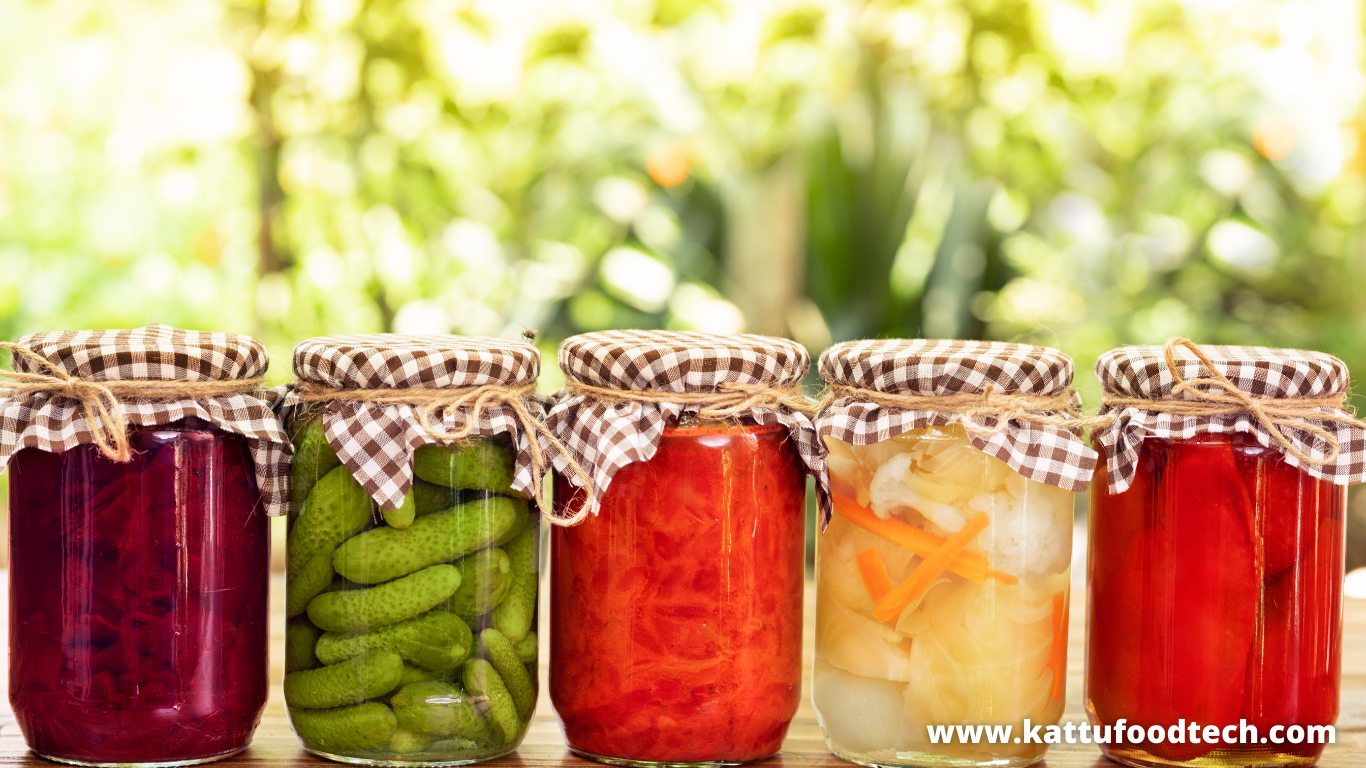Currently Empty: $0

Food Science & Technology Quiz (19-12-2021)
Q1. Salt concentration In the fermented vegetable products?
- 1 – 2%
- 5 – 8%
- 2.5-6.0%.
- 10-12%
ANSWER – C. 2.5-6.0%.
Explanation: Lactic acid bacteria, which are essential for the proper fermentation of vegetables, are found in relatively small numbers at first. Salt is added at the outset of the fermentation at such a concentration (2.5-6.0 percent) that putrefactive bacteria are held at bay long enough for lactic acid-producing bacteria to flourish. So, Salt concentration In the fermented vegetable products is in the range of 2.5%-6%.
READ MORE – Food Science & Technology Quiz (19-11-2021)
Q2. ___________________along with P.cerevisiae plays a major role in the fermentation of vegetables in the brine.
- Leuconostoc mesenteroides
- Lactobacillus plantarum
- Lactobacillus brevis
- Pseudomonas
ANSWER: B. Lactobacillus plantarum
Explanation: Lactobacillus plantarum is a high-acid-producing species that, along with P. cerevisiae, plays an important role in vegetable brine fermentation. Acidity of more than 1% is rare in brine, but if enough sugar is present, an acidity of 2.0-2.5 percent can be achieved in a dry-salted vegetable.
READ MORE – Food Science & Technology Quiz (29-11-2021)
Q3. ______ is a deep–fat acidity-fried, salty, crispy product prepared from fermented wheat.
- Kurdi
- Kenima
- Khaman
- Waries
ANSWER: A. Kurdi
- Explanation – Kurdi is a salty, crunchy deep-fat fried delicacy made from fermented wheat. Before the slurry is fried to form the snack that is relished in Central India, wheat grains are soaked for around 5 days at 30°C. Although yeasts and lactic acid bacteria are involved in the fermentation process, little is known about it.
READ MORE – Food Science & Technology Quiz (09-12-2021)
Q4. Some of the beneficial properties of fermented products over original agricultural commodities are?
- Better nutritional value
- Shelf life
- Inexpensive
- All of the above
ANSWER: D. All of the above
- Explanation: Fermented foods are agricultural products that have been transformed into desirable food items by the enzymatic activity of microorganisms. The qualities of fermented foods are thought to be superior to those of the original raw materials. In many circumstances, the nutritional values and keeping characteristics of the finished product are superior to those of the raw components. Fermentation of indigenous foods is seen as a low-cost, high-impact method of food production that could help alleviate global food shortages.
READ MORE – Food Science & Technology Quiz (19-11-2021)
Q5. The red-colored compound is synthesized by _______ during fermentation of angkak, while the yellow pigment is in soaked rice.
- Penicillium roqueforti
- Botrytis
- Monascus purpureus
- Mortierella
ANSWER: C. Monascus purpureus
- Explanation – Temphe (fermented soybean product from Indonesia), Oncom, and Angkak are the most well-known foods made mostly by mold activity. The fermentation of rice with Monascus purpureus produces red-colored kernels, which are used to make angkak. The substance is not a food, but it is used to lend a pleasing red color to certain fish products and alcoholic beverages manufactured from soybeans.
READ MORE – Food Science & Technology Quiz (18-11-2021)

 0
0

